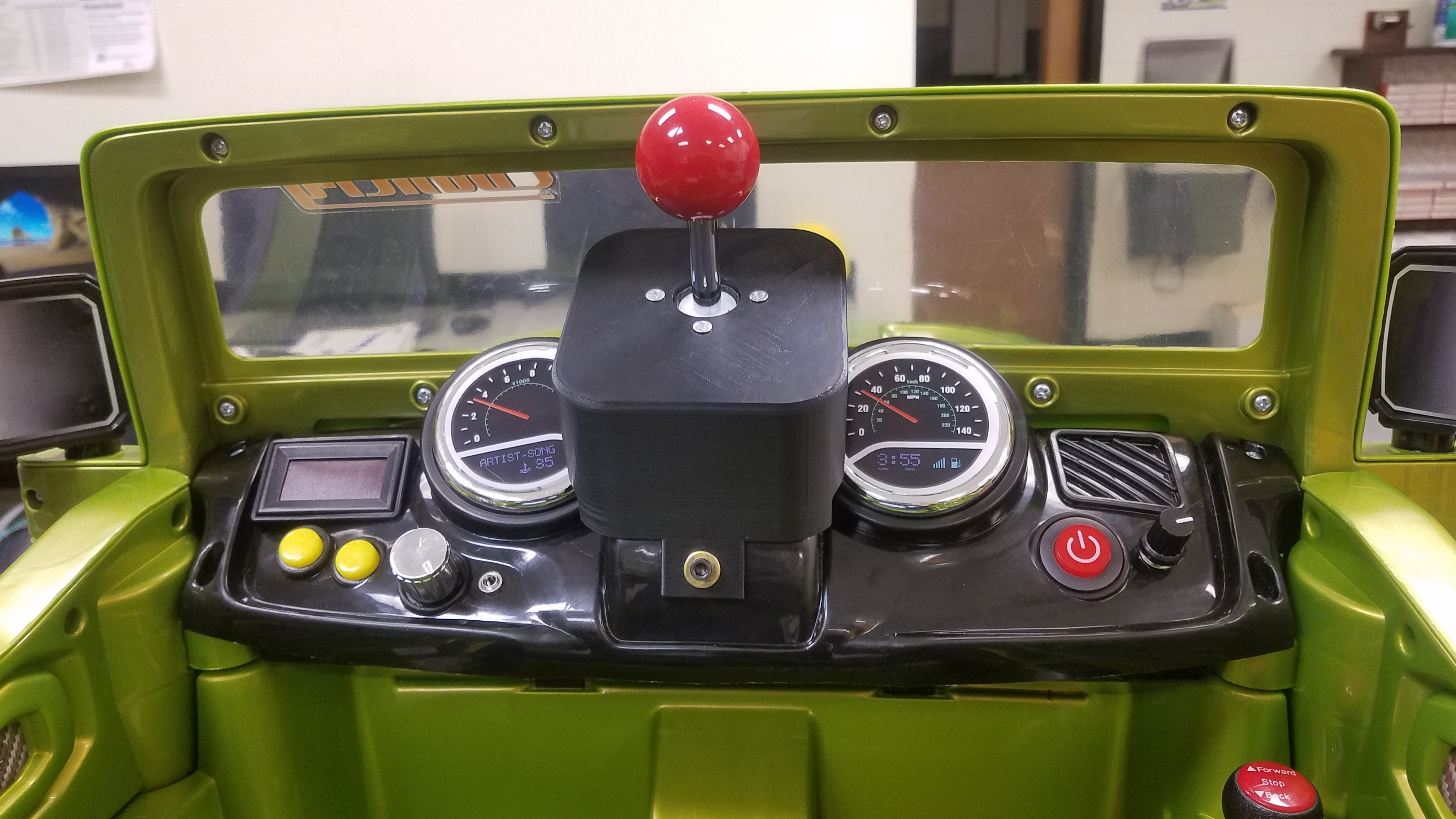
Assistive Technology Designs & Coordination
OVERVIEW
My FIRST Robotics Competition team, Triple Helix, collaborates with VCU’s Occupational Therapy program. We work with PhD students to participate in assistive technology projects. Assistive technology is technology that helps those with disabilities. As the assistive technology coordinator for our team, I handle communications between our robotics team and our school district. By doing this our team was able to modify different toys and objects to connect things like toys, fans, and electric cars so that children with disabilities could learn cause and effect relationships and move around effectively. For over two years now I have been able to further my abilities to help these kids through engineering and design with my robotics team.
During my sophomore year on my team, I trained Jason, a VCU OT PhD student, on the machine shop tools (lathe, mill, drill press, etc.) that our team uses to build industrial-sized robots. The skills our team uses are beneficial to the OT field, specifically in developing Assistive Technology (AT) to help those with mental or physical disabilities live a more normal life. AT interested me because my elementary school was a gifted center and a regional center for autism. I was one of the gifted students picked to assist kids with disabilities during PE class and on special education field days. Now, through robotics, I realized I could design, modify, and fabricate AT to help these kids.
As a junior, in addition to being the mechanical fabrication lead, I volunteered to be my team’s Assistive Technology Coordinator (ATC). This gave me the opportunity to fully immerse myself in the world of AT. I taught Sierra, our second OT PhD student, how to use shop tools, while simultaneously teaching younger robotics students how to machine parts for the robot. I lead my teammates in the process of modifying toys, fans, and other devices, allowing students with disabilities to learn cause-effect relationships by triggering the toys’ functions. We even modified several electric ride-on toy cars so that children with mobility issues could move around in an inexpensive and independent way. As my team’s ATC, it was also my job to communicate with the ATC for my school district and coordinate the delivery of the devices my team made, many of which ended up at my old elementary school. Although stressful at first, I successfully learned to balance my AT work with my work on our now award-winning robot.
As ATC, I learned working in STEM can better people’s lives. After seeing what effective leadership can do, and how I can contribute to putting a smile on a child’s face, I have gone on to actively pursue other leadership positions like Vice President of the National Honor Society. My hard work in both leadership positions was worth it, as I enjoyed working alongside my peers towards a rewarding outcome. I plan to continue being a female leader in the STEM field, and will apply what I learn to benefit others.
This video is about the Sierra’s, a VCU doctoral student in Occupational Therapy, work with our robotics team in the area of assistive technology. I speak in the video here at time mark 21:50.